Temperature Readings
Thermometers are used to measure temperature. There are lots of different sorts of thermometers, each having a different use. This page describes just a few of them.
It is important to measure the temperature, as this makes a big difference to us in many ways. Farmers need to know when their seed will germinate, drivers need to know if there will be ice on the roads. Can you think of other reasons why we need to know how warm or cold it is?
When you have finished reading about this you may want to return to Collecting Data.
Units of MeasurementAll temperatures are recorded in degrees Celsius (ºC). This is the standard unit
in Europe and most of the world. When reading the scale check
first to see what each mark represents. On this scale, from
the wet thermometer, each line represents one degree Celsius.
You can then count on or back from the nearest number. |
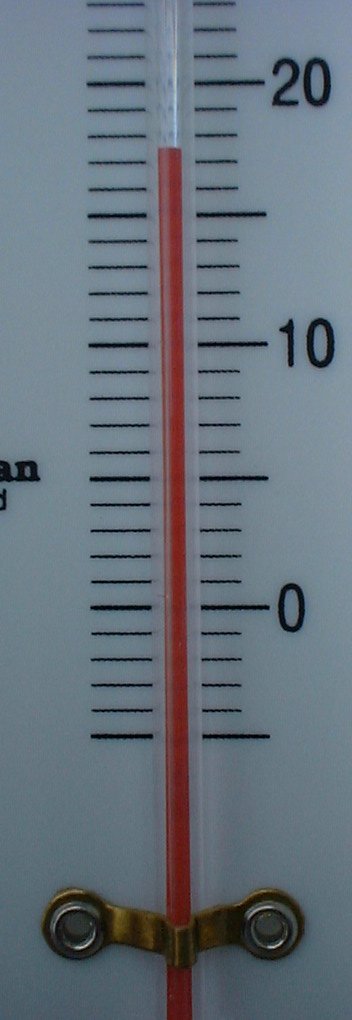 |
Data Checking
|
 |
Maximum and minimum temperatureMaximum temperature is the warmest (largest number) since the last reading. The
Minimum temperature is the coldest (smallest number) since
the last reading. The maximum temperature should never be smaller
than the minimum temperature. |
 |
Reading the maximum and minimumThe 'Max/Min' thermometer can keep a record of the warmest and coldest temperatures
when we are not there. |
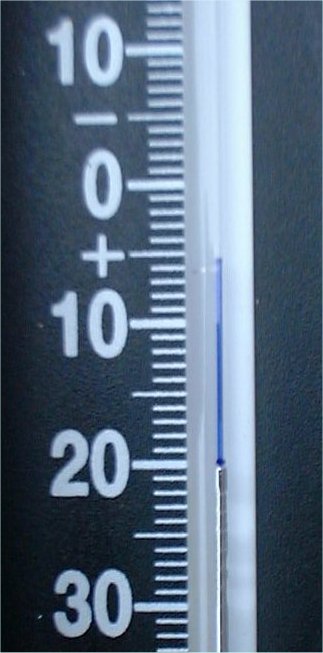 |
Maximum and Minimum ThermometersCan you see how the instrument is made up of one long, curved thermometer? This
means that you must be very careful when reading the scales.
Look to see if the number is a plus or minus. Check
your
reading when you have written it down! |
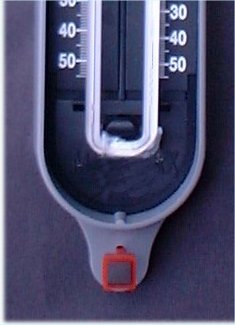 |
Wet and Dry TemperaturesThe current temperature is taken from the dry temperature reading. The purpose of the wet and dry temperatures is to allow you to work out the humidity of the air. See the Humidity page for more details. |
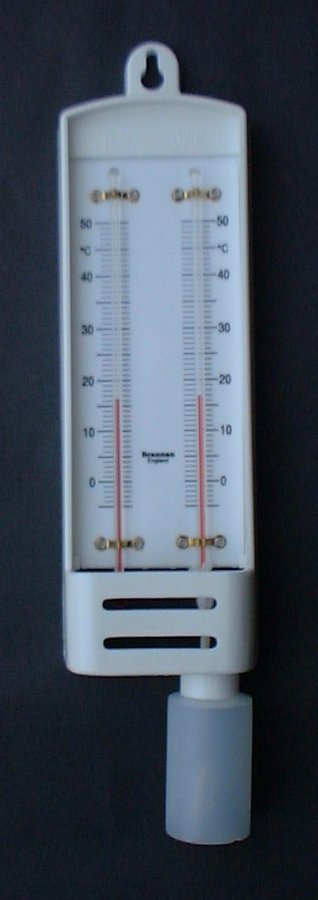 |
Checking Wet and Dry ReadingsThe wet temperature reading should not be bigger that the dry temperature. This is because when things are wet they are colder. On very dry sunny days these temperatures will be further apart. It is usual for the two temperatures to be fairly close together when it is raining. |
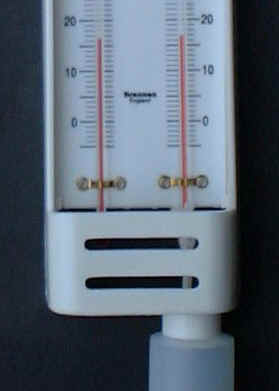 |
MaintenanceMake sure that the reservoir of water is topped up with clean distilled water. If it runs dry you will have two dry thermometers! The little bottle unscrews so that you can fill it. |
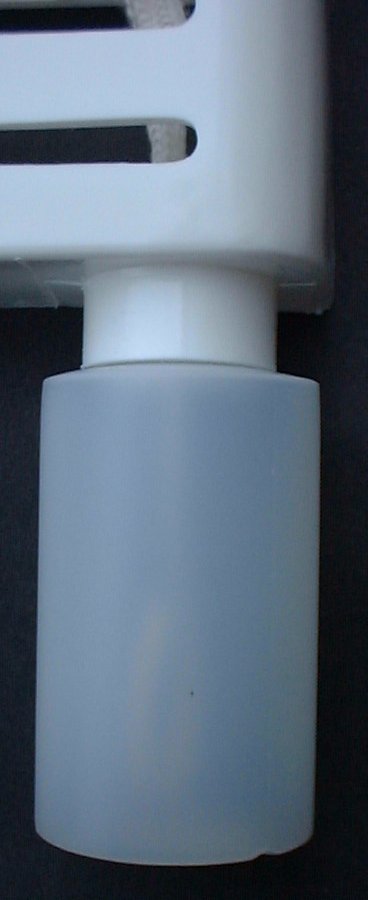 |
Using ICTThere are many cheap digital thermometers these days. The instrument in the
image can measure the current, maximum and minimum temperatures
in
two
locations. One reading is taken from an internal sensor, the
other uses the probe on the end of the cable. |
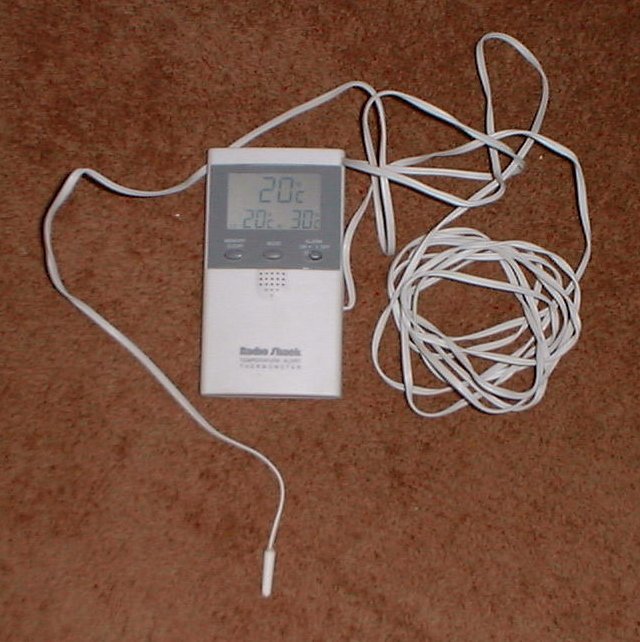 |